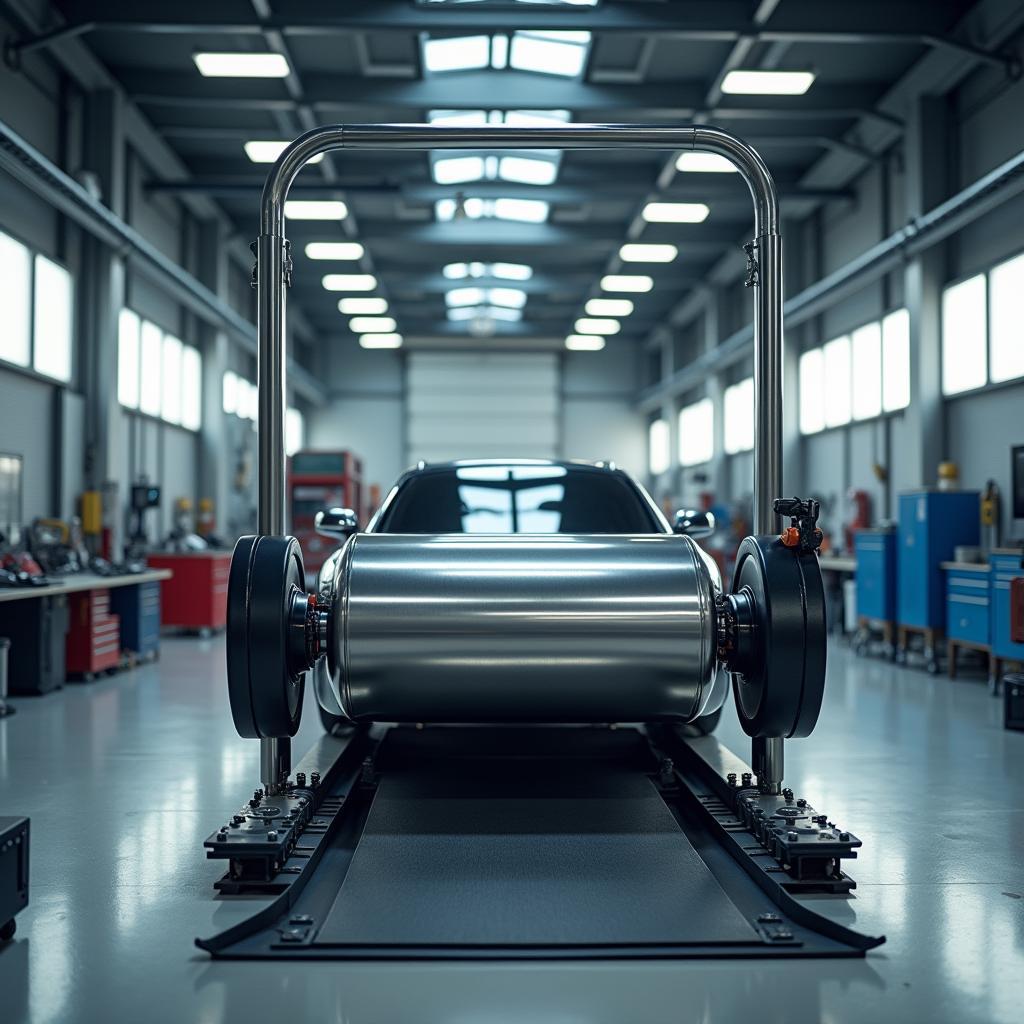The chassis dynamometer – often referred to as a “rolling road” or “vehicle test rig” – has become indispensable in modern auto repair shops. But what exactly is behind this term, and what advantages does it offer mechanics in diagnosing and repairing vehicles?
What is a Chassis Dynamometer?
A chassis dynamometer is a technical device that allows a vehicle to be operated under controlled conditions without actually moving. The vehicle is placed on rollers that are driven by electric motors. This enables mechanics to simulate various driving conditions – from slow speeds to high velocities – while simultaneously observing and analyzing all relevant vehicle components in action.
 Modern chassis dynamometer in a car repair workshop
Modern chassis dynamometer in a car repair workshop
The Advantages of a Chassis Dynamometer
Using a chassis dynamometer offers numerous advantages for auto repair shops and mechanics:
- Efficient Fault Diagnosis: By simulating various driving conditions, faults that only occur while driving can be more easily identified and located.
- Safe Working Environment: The chassis dynamometer enables troubleshooting in a safe environment, without having to operate the vehicle on the road.
- Comprehensive Analysis Options: Modern chassis dynamometers are equipped with sensors and software that record and evaluate a variety of data – from engine performance to exhaust emissions.
- Improved Repair Quality: Precise diagnosis enables targeted repairs, thus increasing the probability of successful troubleshooting.
“A chassis dynamometer is like an X-ray for mechanics,” says Dr. Markus Schmidt, automotive expert and author of the book “Modern Vehicle Diagnostics.” “It allows us to identify problems that would otherwise remain hidden.”
Application Areas of a Chassis Dynamometer
The chassis dynamometer is used in many areas of vehicle diagnostics and repair, including:
- Engine Diagnostics: Analysis of engine performance, exhaust emissions, and injection behavior.
- Transmission Testing: Checking the shifting processes and identifying noises or vibrations.
- Brake Testing: Control of braking performance and detection of irregularities in the braking system.
- Suspension Analysis: Inspection of shock absorbers, springs, and other suspension components.
What to Consider When Buying a Chassis Dynamometer?
The selection of the right chassis dynamometer depends on the individual needs of the workshop. Important criteria are:
- Roller Size and Load Capacity: Suitable for the vehicle type and weight.
- Equipment and Functions: Sensors, software, optional modules for special applications.
- Quality and Safety: Certifications and test seals offer additional security.
Conclusion
The chassis dynamometer is an indispensable tool for modern auto repair shops, making fault diagnosis and repair more efficient, safer, and more precise. Investing in a chassis dynamometer pays off through time savings, improved repair quality, and higher customer satisfaction.
Further Questions About Chassis Dynamometers?
- What types of chassis dynamometers are there?
- What costs should be expected when purchasing one?
- Are there special training courses for operating a chassis dynamometer?
Our expert team at autorepairaid.com is happy to provide you with personal advice. Contact us today!
